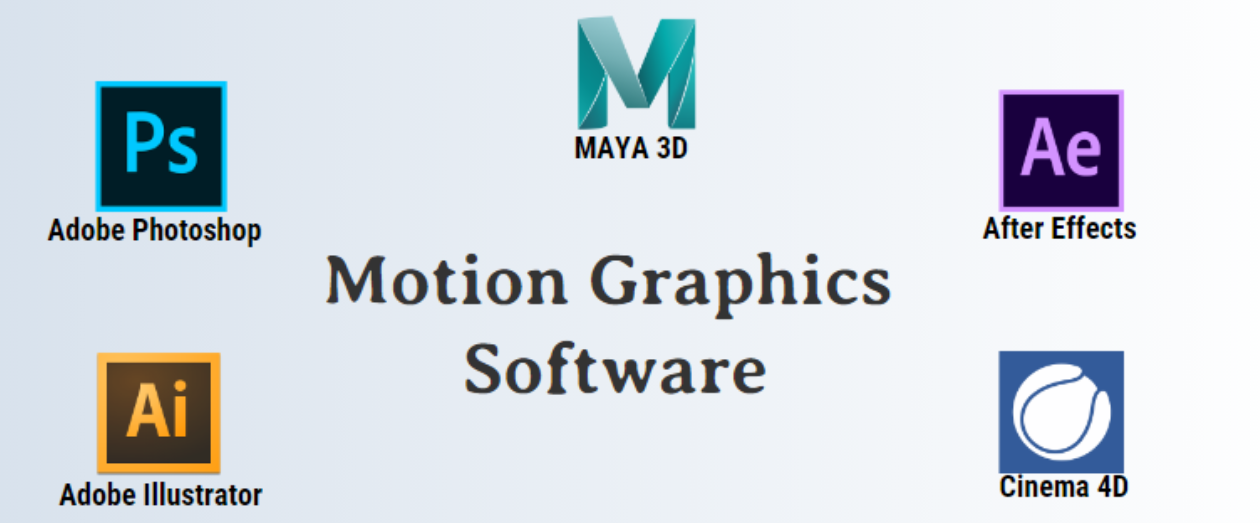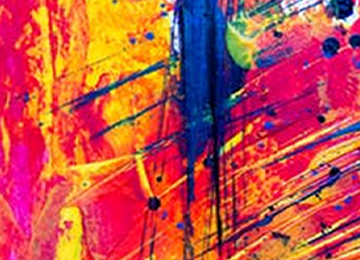blog
Motion Graphics vs. Animation: What’s the Difference?

Motion graphics and animation are similar and interchangeable in the creative and digital media world. This makes sense since both have moving visuals, design components, and a rhythmic flow.
However, there are distinct differences that would make them separate. The importance of the differences should not be understated, considering the vast advancement and impact both have.
The global animation industry in 2024 is estimated to be around USD 436.24 billion and is expected to grow to roughly USD 895.71 billion by 2034, at a rate of 7.5%. Furthermore, the motion graphics industry is projected to be at USD 6.9 billion in 2024 and reach the USD 12.1 billion mark by the end of 2033, at a rate of 6.9%.
To all the businesses and brands looking to improve their communication, marketing teams looking to run campaigns, or even designers trying to find their niche, understanding these differences will help them through their decisions.
Take a step back for a moment to focus on the specifics later. Below is a table that compares and contrasts some noteworthy differences for you.
| Aspect | Motion Graphics | Animation |
| Purpose | Functional: explains, informs, clarifies | Emotional: tells stories, builds characters |
| Style | Minimal, clean, often vector-based | Expressive, complex, visually rich |
| Tools | After Effects, Illustrator, Cinema 4D | Blender, Toon Boom, TVPaint, Procreate Dreams |
| Usage | Product videos, tutorials, UI demos, ads | Short films, character-driven ads, and games |
| Time & Budget | Faster, more affordable (avg. $1,100–$9,000 per min) | More intensive ($3,000–$25,000 per min) |
1. Purpose: Function vs. Feeling
Let us start by figuring out where each segment differs, as this is the first step to understanding each segment.
Motion graphics are built to communicate.
Motion graphics are specifically created to communicate information effectively. They are best suited for conveying information, simplifying complicated processes, and enriching viewers’ understanding.
Indeed, a motion design agency takes pride in showcasing visuals that clearly articulate the organization’s work and the value it brings.
Animation is built to tell a story.
It can be animated in the movies or an animated TV series. If there is a set of ideas to convey, then the world can be real or made up, but stories don’t leave the viewer. They capture you completely.
It not only showcases modern gadgets but plunges you into a world Pixar fashioned using human emotions. All Pixar showcases a form of storytelling that no one has held off on. It resonates with every human being.
Examples
Up launches viewers into the world crafted by Pixar, where they weep and laugh. Only 30 seconds of a fitness app does not hold half the value of anticipation. People do not just consume the content. They anticipate adding value.
2. Style: Sleek vs. Expressive
Here, your eyeballs can tell the difference, even if your brain has not caught up.
Motion graphics lean on simplicity.
Yes, the flat-out drafts enable design. The typography on messages and banners needs to serve a purpose. Each motion graphic explains a device. Looking sleek makes businesses novel. Social media has taken its value to work towards modern pitching offers.
Visual snapshots have a shining effect on attracting attention. Simply switching text images and descriptions with captivating animation can magnetize customers, as a study conducted in 2020 proved.
The stats were mesmerizing, claiming that social media ads soared brand new clients up by a mind-blowing 93%, and that is showing captivating visuals or motion design.
Animation is the wild card.
Got more than a handful of ideas from the confines of your imagination?
Want to bend physics? Create impossible creatures? Craft a dream sequence with floating cities and expressive eyes?
Claiming that it is the realm of animation would not be wrong. Whenever visual complexity, such as detailed graphics or congested animations, is used within a product, it aims to do significantly more than solely emphasizing attributes such as evoking mood, emotion, memory, or even nostalgia.
3. Tools & Techniques: Plug-and-Play vs. Frame-by-Frame
This one is for all you gearheads out there.

Source: TRON
As far as Motion Graphic designers go, they operate in software such as:
- Adobe Illustrator
- Adobe After Effects
- Cinema 4D
- Maya 3D
Using those programs, you get the best motion graphics software where you are animating your type, shapes, icons, or UI elements, which are performed with keyframes, transitions, plugins, and even expressions. And yes — templates galore.
Animation Uses Tools Like:
- Toon Boom (For anime and film)
- Blender (3D animation and modeling)
- TVPaint (2D hand-drawn work)
- Procreate Dreams (for quick frame-by-frame iPad magic).
These devices allow for more animatronic elements to be incorporated, such as clothing, physics intact, and nuance to be added.
You will be animating skeletons, meshes, weights, and expressions. Although the processes and steps are grueling, the creativity is boundless.
Quick note:
Have you heard of “on twos”? Each drawing shows up for two frames, instead of one, which is classic in 2D animation. You won’t see that in motion graphics. Animation being “alive” requires a combination of artistry and subtle techniques.
4. Where They Show Up: Boardrooms vs. Binge Lists
Let’s examine spaces because the context matters.
Motion graphics:
- Startup pitch videos
- Social ads
- UI walkthroughs
- Instagram Stories
- Corporate training videos
- Conference openers
You see this in digital marketing campaigns, SaaS product explainers, and LinkedIn ads with white backgrounds and bold typography. It’s visual support. It’s there to assist a message, not become the message.
Animation:
- Short films
- TV Shows
- YouTube cartoons
- Gaming cinematics
- Interactive storytelling
- Ads with Personality
Animation is delivered through storytelling and the formation of a connection with audiences. If you’ve ever fallen in love with a character in a 60-second ad, that is thanks to animation.
Here’s the kicker:
Everything seamlessly blends. A well-designed explainer video could begin with heavy motion graphics and seamlessly transition to fully animated storytelling. This fusion is especially effective in branded storytelling, where emotion and athleticism are key.
5. Production Time & Budget: Snack vs. Feast
Let’s strip it down to its core – the timeline, cost, and scope of work—where expectations must truly harmonize.

Image Source: Canva
Motion Graphics: The Quick and Cost-Effective Choice
Generally speaking, motion graphics is the quickest and least expensive option. These projects capitalize on built-up assets and often do not require complex turn-taking or elaborate scene changes.
Depending on the project’s specific details, these can be done in days, which increases efficiency and reduces costs due to the lower number of specialists needed.
In 2025, the estimated price range for a 60-second motion graphics video is $1,100 to $4,000, with an optimal range around $9,000. The production quality, level of personalization, and provider location all affect the price.
Animation: A Time-Intensive Investment with Emotional Payoff
Animation projects, especially ones that include character animations or tell a story, require considerable work in advance.
Even basic character animation can involve an elaborate process, such as conceptual art creation, storyboarding, character design, rigging, frame-by-frame drawing, voiceover syncing, and final touch polishing.
This complexity is reflected in the cost. For instance, 3D animations are between $15,000 and $25,000 per minute, while for 2D animations, the lowest is $3000 and goes up to $7,000 for a minute of animation.
Projects of average complexity will cost within the mentioned range. With greater spending, products tend to be marketed more effectively and are often more emotionally impactful.
Choose with Purpose
So, which one will you pick?
Use Motion Graphics:
- When you need to demonstrate a product, service, or concept in detail
- When addressing business and technology professionals
- When time, resources, and budget are constrained
- Motion graphics are great for visualizing and simplifying complex concepts. They are extremely useful for walkthroughs, tutorials, or engagingly explaining concepts.
- Corporate and technical audiences value precise, effective, and efficient delivery. Motion graphics offer a clean, modern look that complements presentations, Super Apps demos, internal training sessions, and pitch meetings with investors.
- Motion graphics require fewer resources than character animation. Rotating and sophisticated pioneer designs focused on typography, icons, data, and transitions. Simplification turned out to be economically friendly and thus suited for delivering messages.
Consider Animation When:
- When you wish to narrate a story or elicit a reaction
- If there is sufficient time and funding available
- Character development, scene changes, and narratives reveal emotion. Animation works great for projects meant to entertain or emotionally connect with viewers. It helps inspire, build relationships, and provide value.
- To those seeking entertainment, such as younger people or social media users, animation captures imagination and elegance visually, telling stories in a way that keeps attention for longer.
- For animation to be successful, it has to be done resourcefully. The involvement of storyboards, voice representatives, character creation, and post-production work all fall under this category. Once sufficient funds and time are allocated, animation can become an enthralling vision.
Final Thoughts
Motion graphics and animation are not competitors in a creative arena. They are complementary forces. Each has its rhythm, voice, and impact, and when used intentionally, both can transform how ideas are shared, stories are told, and audiences are engaged.
Motion graphics are the unsung heroes of modern communication. They live in spaces we often take for granted, including onboarding flows, explainer videos, app tutorials, pitch decks, and even digital billboards.
Whether you need the precision of motion graphics or the emotion of animation, Tangence is here to help. Let us collaborate and create something unforgettable. Contact us today; your story deserves to be seen and felt.
